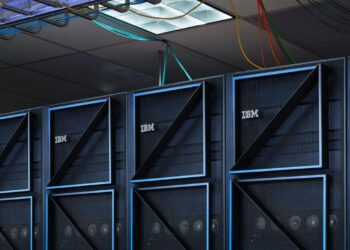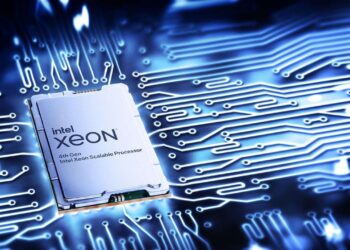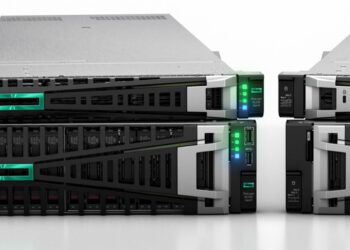In the ever-evolving landscape of enterprise technology, where innovation is constant and competition fierce, achieving and maintaining a leadership position is a testament to unwavering quality, strategic foresight, and continuous adaptation. For decades, Hewlett Packard Enterprise (HPE) has consistently stood as a formidable force in the server market, demonstrating remarkable resilience and a sustained commitment to meeting the diverse and demanding needs of businesses worldwide. The narrative of HPE server dominance continues isn’t merely about market share; it reflects the company’s profound influence on data center evolution, its dedication to cutting-edge research and development, and its ability to deliver solutions that empower organizations to navigate complex digital transformations.
The Enduring Relevance of Physical Servers
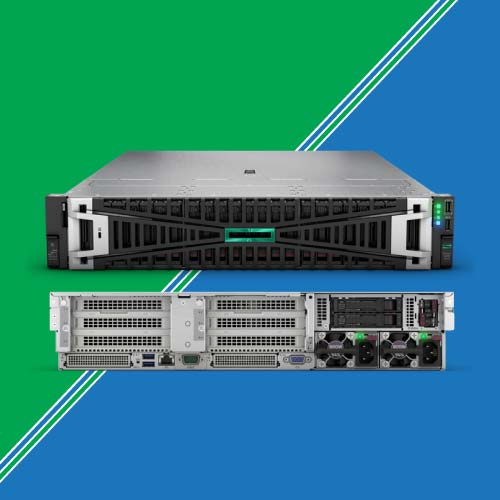
Despite the ascendance of cloud computing and virtualization, the foundational importance of physical servers remains undiminished. They are the bedrock upon which all digital infrastructure rests, whether on-premises, in hybrid environments, or within hyperscale cloud provider data centers. Enterprises still rely heavily on physical servers for mission-critical applications, large-scale databases, high-performance computing (HPC), artificial intelligence (AI) workloads, and sensitive data processing where direct control and tailored performance are paramount. HPE has consistently delivered reliable, powerful, and innovative server solutions that cater to this enduring demand, solidifying its position as a go-to vendor for businesses seeking robust and future-proof IT infrastructure.
The key to HPE’s sustained leadership lies in its comprehensive portfolio, its deep understanding of enterprise pain points, and its proactive approach to integrating emerging technologies. From the smallest remote office to the largest data center, HPE servers are designed to deliver performance, security, and manageability that meet the exacting standards of the modern enterprise.
Pillars of HPE’s Enduring Server Leadership
HPE’s continued dominance is built upon several strategic pillars, each contributing to its comprehensive offering and market appeal.
A. Comprehensive Portfolio
One of HPE’s greatest strengths is its incredibly diverse and specialized server portfolio, designed to address virtually every enterprise workload and deployment scenario. This breadth allows customers to choose precisely the right server for their specific needs, optimizing performance and cost.
- HPE ProLiant Servers: The flagship line, ProLiant, is synonymous with enterprise-grade reliability and performance. Available in various form factors (rack, tower, blade), ProLiant servers are versatile workhorses, suitable for general-purpose computing, virtualization, databases, and enterprise applications. They are known for their robust security features, ease of management via HPE iLO (Integrated Lights-Out), and consistent performance.
- HPE Synergy: Representing a composable, software-defined infrastructure, Synergy is a game-changer for dynamic workloads. It allows compute, storage, and fabric resources to be pooled and instantly recomposed to meet the needs of any application, whether traditional or cloud-native. This “infrastructure as code” approach brings cloud-like agility to on-premises data centers, reducing operational complexity and increasing resource utilization.
- HPE Apollo Systems: Designed specifically for High-Performance Computing (HPC), AI, and Big Data analytics, Apollo systems are engineered for extreme density and performance. These scale-out solutions incorporate massive numbers of CPU cores, GPUs (from NVIDIA, AMD, etc.), and specialized accelerators, making them ideal for complex simulations, scientific research, and intensive AI model training.
- HPE GreenLake for Compute: This innovative consumption model brings the cloud experience to on-premises servers. Customers consume HPE servers as a service, paying for what they use, with capacity dynamically scaled up or down by HPE. This offers financial flexibility, aligns costs with business demand, and offloads infrastructure management to HPE, allowing customers to focus on their applications.
- HPE Edgeline Systems: Recognizing the explosive growth of edge computing, Edgeline servers are ruggedized, compact, and optimized for deployment outside traditional data centers. They bring enterprise-grade compute, data acquisition, and control capabilities closer to the source of data generation (e.g., factory floors, remote sites, retail stores), enabling real-time analytics for IoT and AI applications with low latency.
B. Security First
In an era of escalating cyber threats, HPE has made security a cornerstone of its server design, often leading the industry with hardware-rooted protections.
- Silicon Root of Trust: A pioneering feature, HPE’s “Silicon Root of Trust” is embedded directly into the server’s silicon (firmware). This unique fingerprint ensures that the server’s firmware has not been tampered with since manufacturing, providing an unalterable chain of trust from the moment the server boots up. This protects against firmware attacks, which are notoriously difficult to detect and remediate.
- Secure Start and Runtime Firmware Validation: HPE servers continuously validate the firmware (BIOS, iLO, components) during boot-up and even during runtime, detecting and alerting on any unauthorized modifications. If tampering is detected, the server can automatically revert to a known good state or prevent booting.
- Secure Erase: For data sanitization, HPE provides secure erase capabilities to cryptographically erase data from drives, meeting stringent security standards for decommissioning or repurposing servers.
- Integrated Security Features: Beyond the hardware root of trust, HPE servers integrate with broader security solutions, offering features like secure boot, role-based access control, and robust encryption capabilities for data at rest and in transit.
C. Intelligent Management
Managing modern server infrastructure can be complex. HPE’s intelligent management tools simplify operations, improve efficiency, and reduce human error.
- HPE Integrated Lights-Out (iLO): iLO is HPE’s powerful embedded server management technology. It provides secure remote control, monitoring, and management of servers from anywhere, even if the operating system is down. Features include remote console, power control, virtual media, and comprehensive sensor monitoring.
- HPE OneView: This software-defined infrastructure management platform automates the deployment, provisioning, and updating of HPE servers, storage, and networking. It uses a template-based approach to rapidly deploy infrastructure, reduce manual errors, and enforce consistent configurations, making day-to-day operations vastly more efficient.
- HPE GreenLake Central: For customers using HPE GreenLake, this unified platform provides a single view of their IT estate, whether on-premises or in the cloud. It offers consumption insights, capacity planning, and management of their as-a-service offerings, simplifying hybrid cloud operations.
- AI-Driven Operations (InfoSight): HPE InfoSight, acquired with Nimble Storage and later extended to servers, is an AI-driven operations platform that uses machine learning to predict and prevent infrastructure problems before they impact operations. By analyzing telemetry data from millions of devices globally, InfoSight identifies patterns, provides actionable insights, and automates support, significantly reducing downtime and operational costs.
D. Sustainability and Energy Efficiency
As environmental concerns grow, HPE has been at the forefront of designing energy-efficient servers and promoting sustainable data center practices.
- Energy-Efficient Hardware: As mentioned, HPE designs its processors, power supplies, and other components for optimal power-to-performance ratios.
- Advanced Cooling Designs: HPE servers are often designed to work optimally with advanced cooling solutions, including liquid cooling options for high-density deployments, reducing overall data center energy consumption.
- Power Management Features: Servers incorporate granular power management features at the component level, allowing administrators to fine-tune power consumption based on workload demands.
- Product Lifecycle Management: HPE emphasizes responsible product design, manufacturing, and end-of-life recycling programs, aiming to reduce electronic waste and promote a circular economy.
- PUE Optimization: HPE solutions contribute directly to improving a data center’s Power Usage Effectiveness (PUE) by reducing power consumption at the server level and optimizing thermal management.
E. Innovation and Strategic Partnerships
HPE’s continued dominance is also driven by its commitment to innovation and strategic alliances that bring cutting-edge technologies to its server platforms.
- Processor Partnerships: Close collaboration with leading CPU manufacturers like Intel (Xeon processors) and AMD (EPYC processors) ensures that HPE servers consistently integrate the latest and most powerful silicon, often with custom optimizations.
- GPU and AI Accelerator Integration: HPE works closely with NVIDIA (e.g., for NVIDIA GPUs and AI platforms like NVIDIA AI Enterprise) to deliver high-performance servers tailored for AI, deep learning, and HPC workloads. This includes integrating NVIDIA’s latest Tensor Core GPUs and NVLink technology for high-speed inter-GPU communication.
- Memory Innovation: Investing in and supporting advanced memory technologies like persistent memory (e.g., Intel Optane Persistent Memory) that bridge the gap between traditional DRAM and storage, enabling new levels of performance for databases and in-memory applications.
- Open Standards and Ecosystems: While offering proprietary value-adds, HPE also actively participates in and supports open standards and open-source initiatives, ensuring compatibility and flexibility within broader IT ecosystems.
- Research and Development: Continuous investment in R&D to explore next-generation technologies like quantum computing and neuromorphic computing, positioning HPE for long-term leadership.
HPE’s Strategic Market Approach
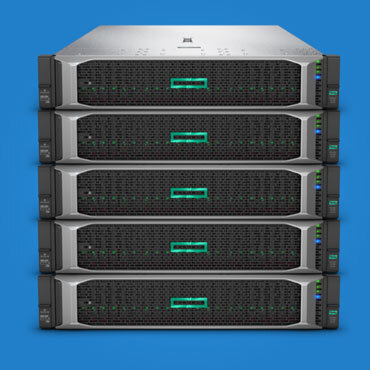
Beyond product features, HPE’s market strategy plays a crucial role in its sustained leadership.
F. Hybrid Cloud Focus
HPE keenly understands that the future of enterprise IT is hybrid. Many organizations will continue to operate a mix of on-premises, private cloud, and public cloud environments. HPE’s server strategy strongly supports this reality.
- Consistent Experience: HPE GreenLake aims to provide a consistent operating model and experience across on-premises, edge, and public cloud environments, simplifying hybrid cloud management.
- Workload Placement Optimization: HPE’s solutions enable customers to place workloads on the most suitable infrastructure (on-premise for control/compliance, public cloud for burst capacity, edge for low latency) while maintaining integrated management.
- Data First Modernization: Focusing on helping customers modernize their data infrastructure, recognizing that data gravity often dictates where processing occurs, pushing compute closer to data at the edge or on-premises.
G. As-a-Service Consumption Model (HPE GreenLake)
The shift from CAPEX to OPEX is a significant trend, and HPE GreenLake is its flagship response.
- Flexible Consumption: GreenLake allows customers to consume IT infrastructure (including servers, storage, and networking) as a service, with pay-per-use billing and elastic capacity. This shifts financial risk from the customer to HPE.
- Managed Services: HPE often provides managed services as part of GreenLake, taking over the operational burden of infrastructure management for customers.
- Market Differentiation: GreenLake differentiates HPE from traditional hardware vendors and offers a compelling alternative to public cloud for specific workloads where on-premises deployment is preferred or required.
H. Channel and Partner Ecosystem
A strong network of partners is vital for reaching diverse customer segments.
- Global Partner Network: HPE leverages a vast global network of channel partners, resellers, and system integrators who extend its reach and provide localized expertise, support, and integration services.
- Specialized Solutions: Partners often build specialized solutions on top of HPE server platforms, catering to niche markets or specific industry requirements.
- Training and Certification: HPE invests heavily in training and certifying its partners, ensuring they have the technical proficiency to deploy and support HPE server solutions effectively.
Challenges and Future Outlook
While HPE’s dominance is well-established, the server market is dynamic, and challenges always exist.
I. Intense Competition
- Dell Technologies: A perennial rival, Dell continues to offer a strong portfolio of PowerEdge servers, often competing directly on features and price.
- Cisco UCS: Cisco’s Unified Computing System offers deep integration with its networking portfolio, appealing to customers seeking converged infrastructure.
- Hyperscale Cloud Providers (In-house Hardware): As hyperscale cloud providers (AWS, Google, Microsoft Azure) increasingly design their own custom server hardware for their vast data centers, it impacts the traditional server market for general-purpose compute.
- Emerging AI Hardware Vendors: Specialized AI chip companies are developing purpose-built accelerators that could challenge traditional server architectures for specific AI workloads.
J. Supply Chain Volatility
Global supply chain disruptions, chip shortages, and geopolitical tensions can impact server production and delivery timelines, affecting all hardware vendors, including HPE.
K. Evolving Workload Demands
The rapid evolution of workloads (e.g., the rise of generative AI, highly distributed edge computing, quantum computing) requires constant adaptation and innovation in server design and architecture. HPE must continue to anticipate and respond to these shifts.
L. Sustainability Imperative
While a strength, the pressure to deliver increasingly sustainable solutions will only intensify, requiring continuous innovation in energy efficiency, cooling, and circular economy practices.
M. Software-Defined Everything
The trend towards software-defined infrastructure continues. HPE must ensure its hardware remains seamlessly integrated with software-defined networking, storage, and orchestration layers, maintaining relevance in an increasingly software-centric world.
Conclusion
The assertion that HPE server dominance continues is not an overstatement; it reflects a strategic alignment with the fundamental needs of the modern enterprise. By offering a comprehensive and specialized portfolio, prioritizing hardware-rooted security, delivering intelligent management tools, championing sustainability, and fostering innovation through strategic partnerships, HPE has built an formidable and enduring presence in the server market.
Its embrace of hybrid cloud models through HPE GreenLake positions it strongly for the future, allowing customers the flexibility of cloud consumption with the control and performance of on-premises or edge deployments. While the landscape of computing is constantly shifting, HPE’s consistent ability to anticipate market needs, invest in critical technologies, and adapt its offerings ensures its continued relevance and leadership as a foundational provider of enterprise server solutions. For organizations seeking reliable, secure, and future-ready infrastructure, HPE remains a compelling and dominant choice.




